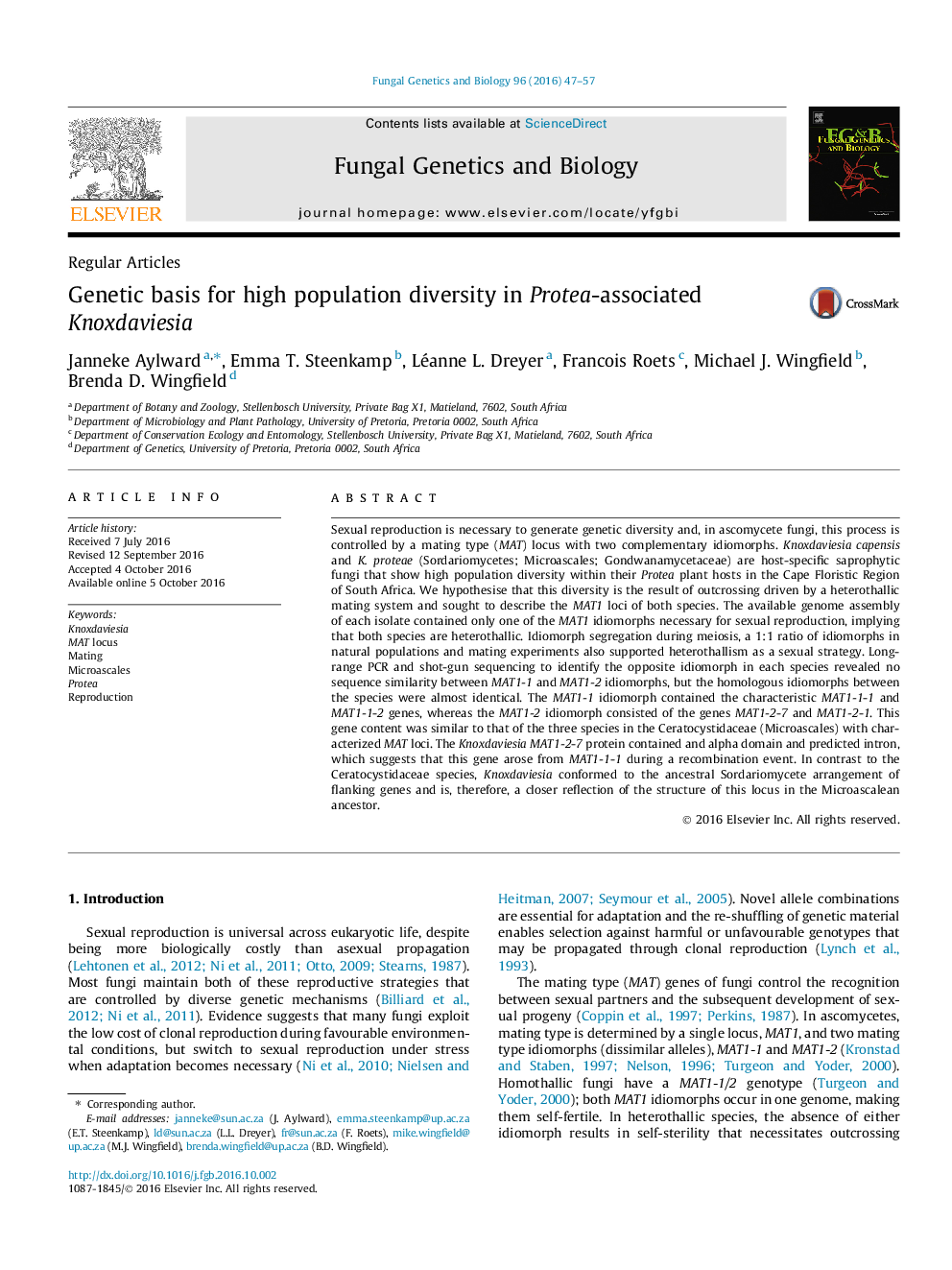| کد مقاله | کد نشریه | سال انتشار | مقاله انگلیسی | نسخه تمام متن |
|---|---|---|---|---|
| 5532808 | 1549995 | 2016 | 11 صفحه PDF | دانلود رایگان |
- Heterothallism drives the diversity of Knoxdaviesia in the Cape Floristic Region.
- Their MAT1 idiomorphs comprise MAT1-1-1, MAT1-1-2, MAT1-2-1 and MAT1-2-7.
- The order of the MAT1 flanking genes conforms to the Sordariomycete consensus.
- The MAT1-2-7 gene was likely derived from MAT1-1-1 via recombination.
Sexual reproduction is necessary to generate genetic diversity and, in ascomycete fungi, this process is controlled by a mating type (MAT) locus with two complementary idiomorphs. Knoxdaviesia capensis and K. proteae (Sordariomycetes; Microascales; Gondwanamycetaceae) are host-specific saprophytic fungi that show high population diversity within their Protea plant hosts in the Cape Floristic Region of South Africa. We hypothesise that this diversity is the result of outcrossing driven by a heterothallic mating system and sought to describe the MAT1 loci of both species. The available genome assembly of each isolate contained only one of the MAT1 idiomorphs necessary for sexual reproduction, implying that both species are heterothallic. Idiomorph segregation during meiosis, a 1:1 ratio of idiomorphs in natural populations and mating experiments also supported heterothallism as a sexual strategy. Long-range PCR and shot-gun sequencing to identify the opposite idiomorph in each species revealed no sequence similarity between MAT1-1 and MAT1-2 idiomorphs, but the homologous idiomorphs between the species were almost identical. The MAT1-1 idiomorph contained the characteristic MAT1-1-1 and MAT1-1-2 genes, whereas the MAT1-2 idiomorph consisted of the genes MAT1-2-7 and MAT1-2-1. This gene content was similar to that of the three species in the Ceratocystidaceae (Microascales) with characterized MAT loci. The Knoxdaviesia MAT1-2-7 protein contained and alpha domain and predicted intron, which suggests that this gene arose from MAT1-1-1 during a recombination event. In contrast to the Ceratocystidaceae species, Knoxdaviesia conformed to the ancestral Sordariomycete arrangement of flanking genes and is, therefore, a closer reflection of the structure of this locus in the Microascalean ancestor.
221
Journal: Fungal Genetics and Biology - Volume 96, November 2016, Pages 47-57
